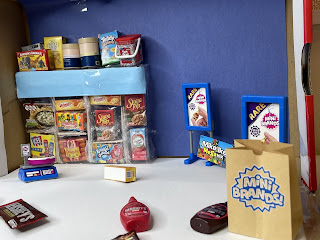Research on Film Openings
- The key elements / features of a film opening sequence are establishing setting, mise-en-scene, character placement, representing genre and cinematography. An establishing setting is a features used to draw the audience in and to give them an insight into where the film is going to be set, this can be done with an establishing shot. Mise-en-scene is basically everything that is captured in the frame used for representing emotion and setting the mood. During the scene the character placement has a huge importance because it represents different status and class or perhaps the relationships between the people in the film. Without the film directors revealing too much of the genre, the genre can be represented by the genres conventions that can be used suggest the narrative and story line and give us an insight for what is to come further into the film. So that as we "the audience" can decide what type of movie we choose to watch, and if the opening doesn’t give us that, we zone out or choose to stop watching. Lastly, cinematography which is the way the footage is presented, this is the key factor that is visually important because it makes it aesthetically pleasing as the audience will become induced into the film because it meets our needs.
- The purposes and reasons for film openings are to set a powerful expression of motion graphics that are used to prelude to the movie. They engage the audience by hinting at what is about to start, whether it’s a movie, TV show, or Web animation. The functions of a title sequence is to set the tone of the movie you are about to see. The effectiveness of theses title sequences are to engage and excite the audience by hinting at some of the topics, themes, and, in some cases, the challenges that characters will be facing. The intention is to build anticipation, sometimes revealing some of the main character’s traits and possibly setting the stage for questions that will be answered later in the movie.
- The similarities in the opening scenes (conventions) irrespective of the genre
Compare / contrast conventions by genre
Visual elements: Common settings in dramas, horror, and comedy films are haunted house/abandon places that are dark, horror films use lowkey/dim lighting while dramas us side lighting. In drama, comedy, and horror film opening scenes, they use medium shots, close up shots, establishing shots, long shots
Auditory elements: In dramas and in comedy's, there is voice overs unlike in horror where there's just dialogue and music
Character development: In drama and horror films some character types the have in common are the protagonists, the antagonist
Plot introduction: In drama and in horror movies, the plot is usually introduced with flash backs and flash forwards but in comedy's, they mostly us teasers.
Representation: In drama films and in horror films a obvious stereotype in the opening scenes are an unfortunate train of events.





